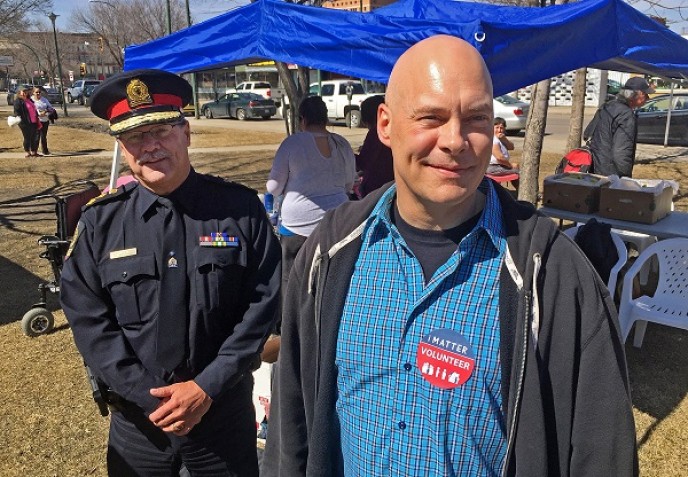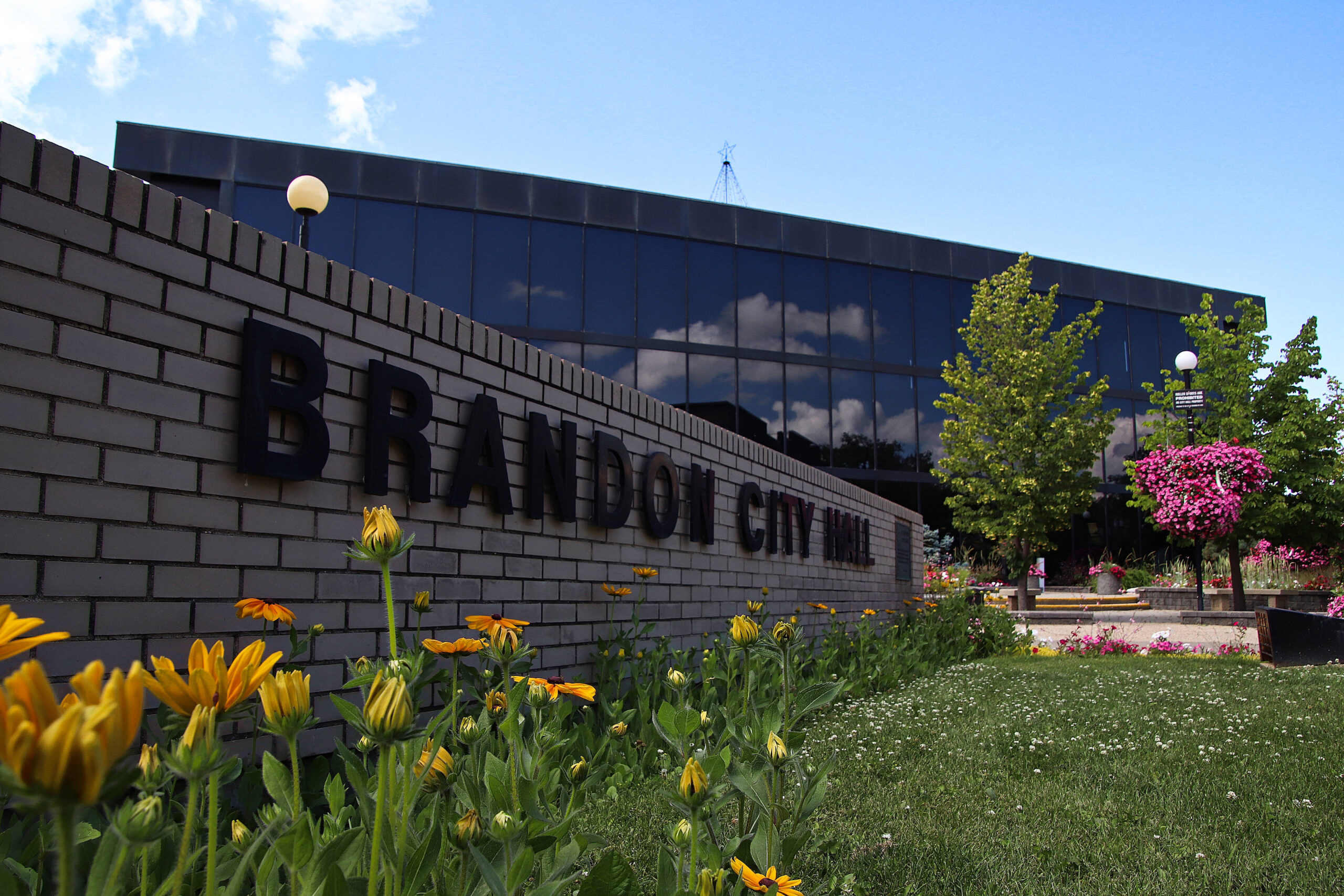Helping the homeless in Brandon

On the first really warm day of spring, dozens of trained volunteers fanned out through city streets, alleys and places that I wouldn’t want to be in after dark.
It was the second Point-in-Time (PiT) Homelessness Count, which provides a snapshot of the number of homeless people in the Wheat City.
Now it might come as a surprise to many residents — those who don’t often stray from their pretty neighborhoods in the outlying areas of the city — that there is a real homeless problem here.
I sure didn’t believe it when I moved back to Brandon in 2004. In fact, in my weekly column in the Brandon Sun, I bluntly dismissed those groups who were trying to get the word out that there were homeless people. All they were doing was trying to raise the profile of the growing problem in order to get some help.
But I had just moved here from Winnipeg. I had been a journalist there for years and saw what a real homeless problem looked like. It was in your face, it was on street corners. It was a blight on the downtown. There were aggressive panhandlers which kept people away from businesses, with some of them closing as a result.
So to prove I was right, I even assigned reporters to search out homeless people. They found a couple of folks camping out near the Eighth Street Bridge. But they said they were from neighbouring communities, just partying as the weather was warm. They found no ‘real’ homeless people.
I felt my position had been justified.
My dismissive attitude towards homeless advocates — especially Youth for Christ — in my column eventually resulted in a standoff of sorts in the fall of 2011. A group of homeless people, or those in shelters, led by some mental health workers, demanded a meeting with me.

I invited them to the Sun’s offices on Rosser Avenue and met with a dozen or so people who wanted to tell me their stories. I made coffee for them. I wasn’t feeling very comfortable at the start of the meeting. I was wearing my managing editor’s uniform of freshly dry cleaned shirt, tie and dress pants. The people around the table were wearing worn clothes. They didn’t remove their coats. Them seemed to enjoy the warmth. The group looked tired, some to the point of nodding off in the warm boardroom
But after an hour, my eyes were opened. I learned that there are several different categories of being homeless. Some were couch surfing with friends. Some used shelters. Some did live on the street, but in such hard-to-find places, they went unnoticed. They couldn’t find work. And they certainly couldn’t find a decent place to live.
Sadly, several of the people in the photo accompanying this piece have passed away. That haunts me.
But after that 2011 meeting, I wanted to further investigate the issue and asked to meet with someone in an emergency shelter. I spent a half-hour with a woman who spilled out her painful story about a medical issue that led to drug dependency. That led to a loss of employment and increased drug use. Then a loss of shelter.
She was clean and sober when we talked, but she only had a few more days to be sheltered in the small, spartan room before she had to return to the streets. She wasn’t sure what she was going to do.
From then on, I changed my attitude towards the issue of affordable housing, homelessness, and mental health issues.
It’s a hard thing to admit when you’re wrong. It’s even harder when you’re doing so in a mainstream newspaper read by tens of thousands of people.
But I was heartened when this Letter to the Editor arrived.
“O'Connor to be Commended for his Compassion”
James O’Connor, managing editor of the Brandon Sun, is to be commended for his article on the homeless in Brandon (Editor’s Notebook, Oct. 22).
The article was written with compassion and understanding of the conditions in which some of our citizens live.
It takes a lot of courage to write about a situation which most of us would prefer to ignore and about which one has some preconceived notions.
It takes even more courage to change one’s opinion, as Mr. O’Connor has done publicly, when presented with information contrary to one’s beliefs.
CHESTER LETKEMAN
Brandon
Republished from the Brandon Sun print edition Oct. 27, 2011
Now let’s get back to that beautiful day in Princess Park last Wednesday.
The PiT Count, funded by the Government of Canada’s Homelessness Partnering Strategy, provides various agencies with a snapshot of sheltered and unsheltered homeless people in the community. The data helps to guide programs and services in the city and allows those organizations to measure progress towards the ultimate goal of ending homelessness in Brandon.
The first PiT Count in Brandon was done on Jan. 21, 2015. The data collected revealed that 117 people were found to be homeless and nearly half of the respondents (47 per cent) were under the age of 30 on the day of the count. Those 117 were a mix of sheltered and unsheltered. Many who were “sheltered” were in emergency shelters who were a few days from being homeless.
“In Manitoba, it’s seasonal,” said Mark Anderson, PiT project coordinator, pictured in this column with Brandon Police Service Chief Ian Grant. “In the summer, they could be under a bridge, in a park, behind a warehouse. In winter they are stacking up wherever they can find shelter.
“There is also another category — episodic homelessness. They might couch surf for a week, or two weeks, but then that all goes to pieces, then they are on the street for a couple of days until the find somebody else to bunk with.”
He mentioned one fellow, dressed quite nicely, who was living in his vehicle.
I asked Anderson what he thought is the root cause of homelessness.
He said it can be economic, the high cost of living, low vacancy rates, the high cost of rent. It can be mental or physical health related.
“With a large part of the (homeless) population … there is a significant prevalence of trauma. Historical background trauma. People who have gone through hard things in life,” Anderson said.
“That leads to disassociation, they have to disconnect to cope. Then chemical dependencies can kick in.”
Getting homeless people off the streets and into some form of housing is the key. The No. 1 factor in Brandon’s homelessness is the lack of affordable housing, according to the Canadian Mental Health Association’s Brandon chapter.
“A couple of groups work with folks who (could be) reasonably good tenants,” Anderson said, noting another stage called transitional housing can be had for four months to a year.
“And the day they move in, the goal is to have them move out with a job and some stability in their lives.”
This year’s survey featured a new element called The PiT Stop.
Anderson said a community event would provide a great forum to celebrate together as well as draw people together to assist in conducting surveys.
The project was hosted by Brandon Neighbourhood Renewal Corporation, he said.
The PiT Stop, which attracted a large crowd, featured local talent on stage, and wellness opportunities for people who don’t always have those types of chances. Wellness opportunities were prioritized towards homeless individuals first. Services offered included: Free hair cuts and styling; manicures; vision reviews; and heart health.
Food sponsors included: Wolf’s Den; Robins Donuts; Wildflower Cafe; Prairie Firehouse; Sabor Latino; Blue Moon Water; Komfort Kitchen; Subway; and Forbidden Flavours.
I spoke with BPS Chief Grant, who was walking around, chatting with people.
“Homelessness is a concern right across the entire country,” he told me. “Our role is evolving, from patrol and enforcement to working with the community resources to try and get shelter for people who are homeless.
“During the winter, we work with Samaritan Health for the Safe and Warm Shelter program. For those who would benefit from a good night’s sleep indoors rather than outside.
“In the summer months, it’s a little more difficult because there isn’t the Safe and Warm program. But our members are becoming more and more aware of the different agencies involved who are trying to address the issue of homelessness.
“We try to channel people in that direction, we can’t force people, but we can say ‘Here’s a resource you might want to take advantage of.’
“Housing is the key.”
(The full report of the 2016 Point-in-Time (PiT) Homelessness Count will be available in six weeks at iMatter-bdn.ca. You can also follow the project on Twitter: @iMatterbdn and on Facebook: www.facebook.com/BrandonPiTCount.)





 -6.4°C Brandon,CA
-6.4°C Brandon,CA



 101
101










